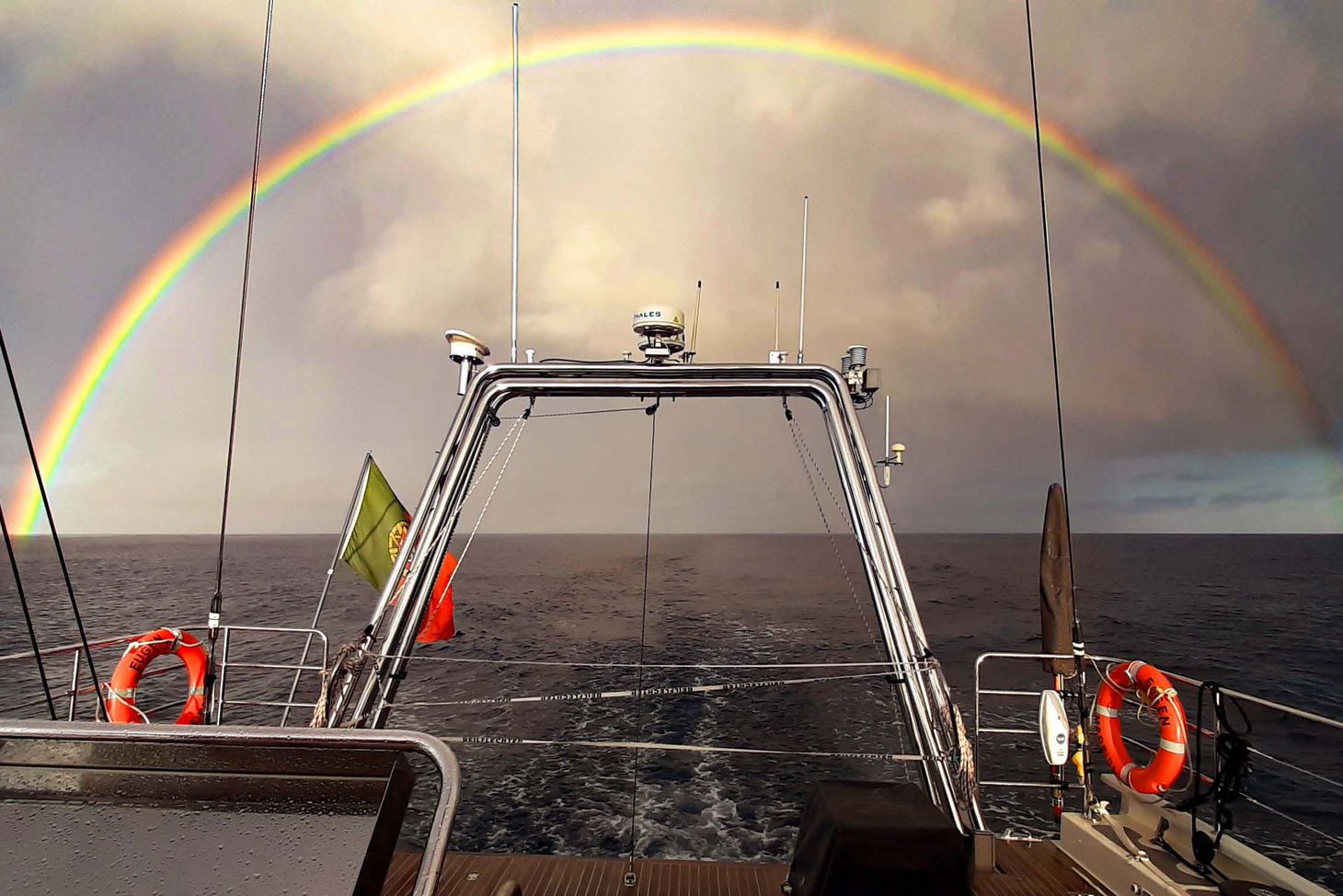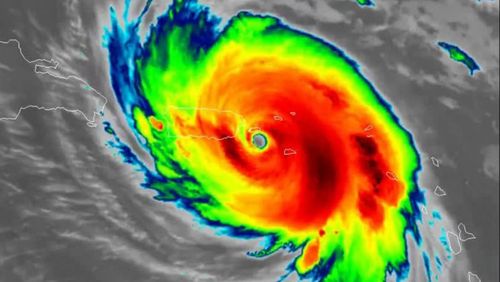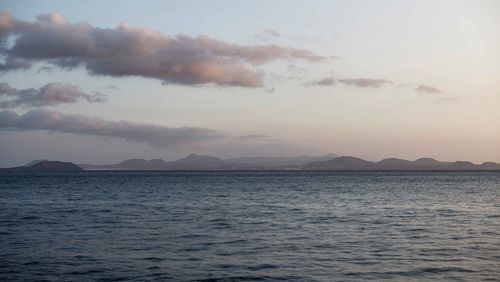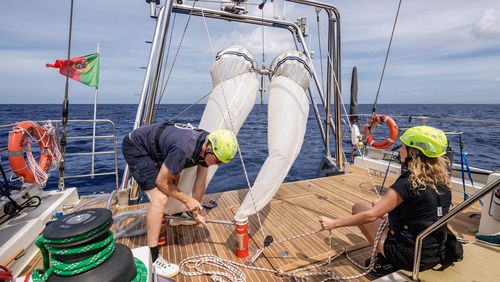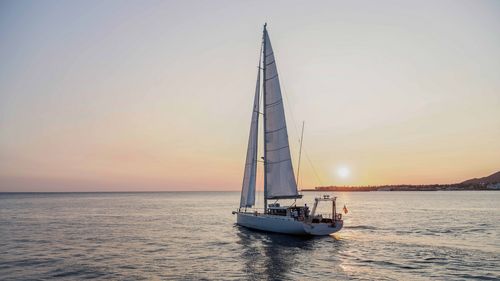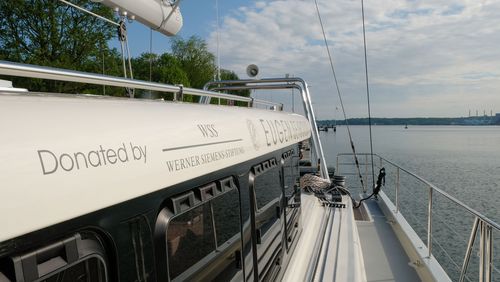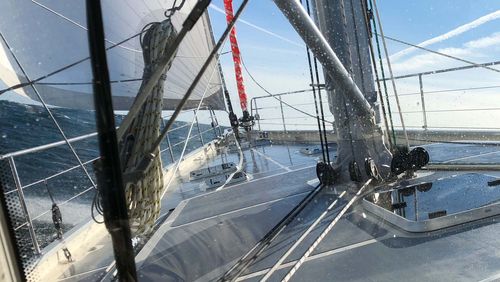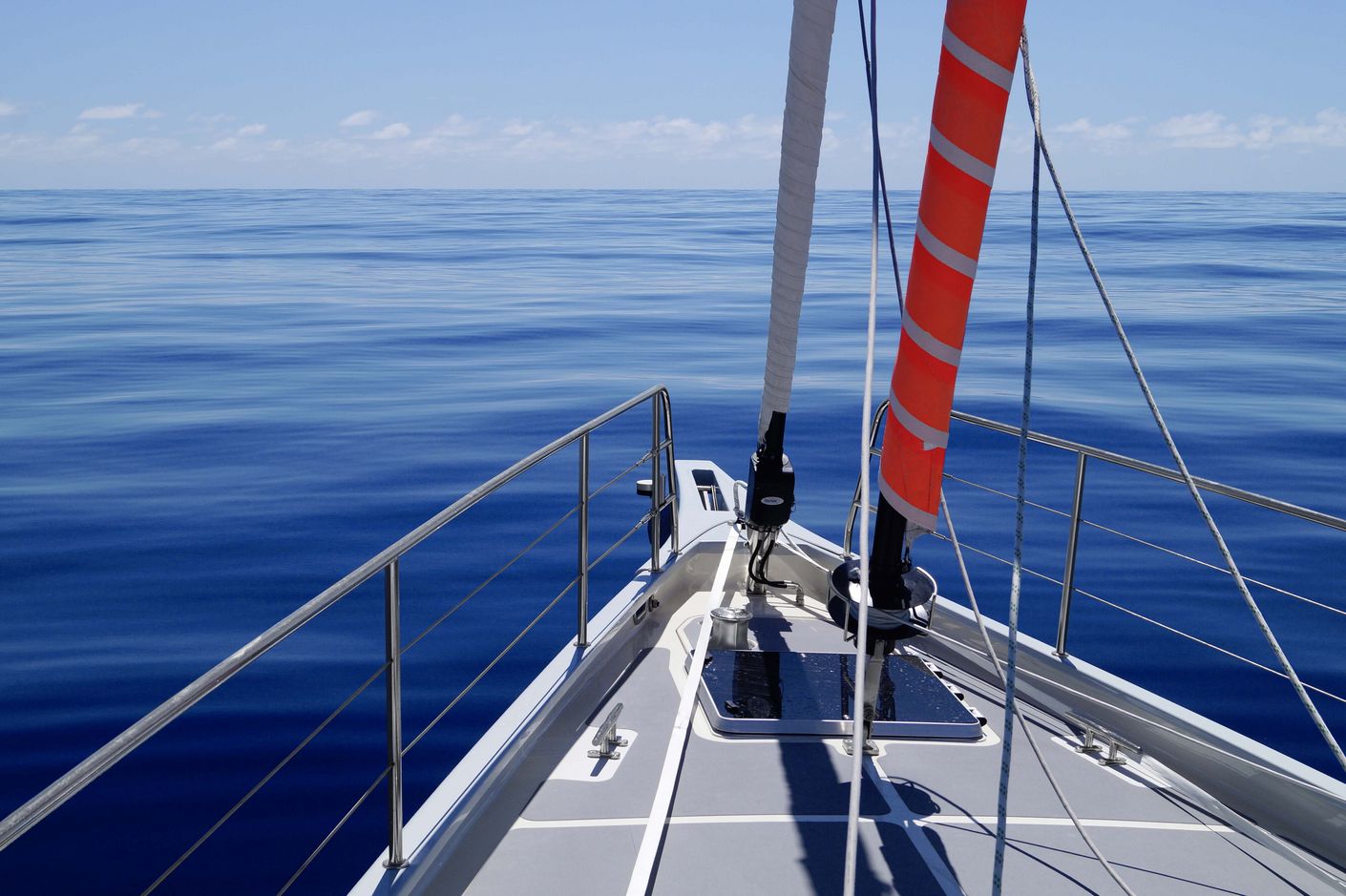
Goddess of the waves
No other research vessel tests the waters with as much elegance and ecological integrity as the Eugen Seibold—small wonder that people fall in love with the sailing yacht whenever they catch a glimpse. That said, we at the Werner Siemens Foundation nearly let the ship sail right out of this year’s report, as our financing was scheduled to end in 2019, with the completion of the maiden research voyage. But, the attentive reader may have guessed: our collaboration has been extended and the Werner Siemens Foundation is pleased to be funding the operating costs for the Eugen Seiboldover the next ten years.
The crew of the Eugen Seibold had planned to collect samples across the entire Atlantic Ocean, from the tropical south to the subarctic north, already in the summer of 2019. But the following September, after their expeditions to the subtropical regions of the Atlantic around Lanzarote, Madeira and the Azores, and then in the eastern zones of the Northern Atlantic, the team realised that additional precautionary measures would be necessary to protect the vessel’s sophisticated electrical infrastructure on board against the rough waters of the Northern Atlantic. In particular, the main battery used to power the vessel’s technical equipment was pushed to its limits. Should the battery completely fail in a storm, the crew would have recourse to only a single portable backup generator. “It just wasn’t safe enough,” says Professor Gerald Haug, the mastermind behind the Eugen Seibold and director of the Department of Climate Geochemistry at the Max Planck Institute for Chemistry in Mainz. “Storms in the Northern Atlantic can be harrowing.”
High operating costs
There were also other unexpected developments. Only the best, most modern measurement instruments were installed on the Eugen Seibold, “which all worked beautifully”, Gerald Haug is careful to stress. “But, with the rough conditions of the high sea, it’s to be expected that one or the other is always breaking down.” As a result, the technical devices and installations all needed to be modified, optimised and recalibrated. After the first year, it also became clear that the budget for operating costs was too optimistic. “A single repair job can easily run to 20 000 euros,” says Haug. In 2019, the Max Planck Institute for Chemistry in Mainz was obliged to spend some three million euros on new instruments and on adapting electric and electronic devices for the research voyages; operating the Eugen Seibold in the coming years will likely generate similar costs. To ensure future operations, the owner of the Eugen Seibold (the private foundation Forschungsschiff S/Y Eugen Seibold) applied to the Werner Siemens Foundation for a credit of three million euros. In addition to covering basic operating costs and foreseeable expenses over the next ten years, funds will be reserved for unexpected expenditures.
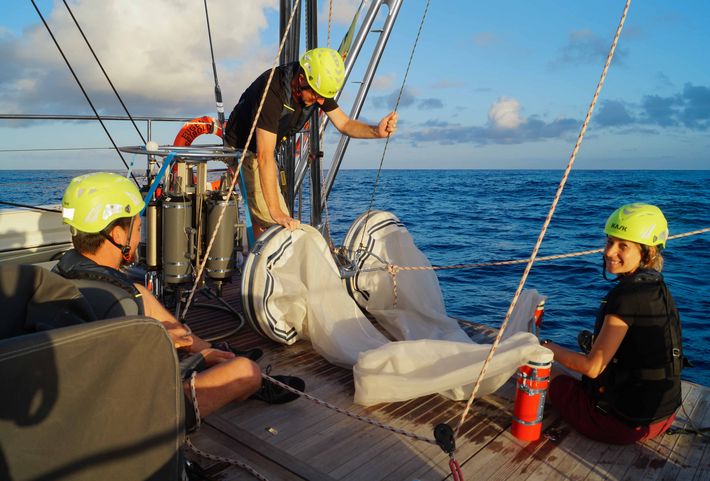
A different kind of emergency
A general overhaul of the Eugen Seibold was conducted from September 2019 to February 2020, at shipyards in Bremerhaven and Kiel. The research vessel now has three electrical supply options and is fully capable of sailing home should any unexpected problems arise along the north-south Atlantic research transect. No one, however, was reckoning with a global pandemic. Starting in March 2020, the novel coronavirus forced the world to take a break. International harbours closed, and the Eugen Seibold had little choice other than to drop anchor until the end of June 2020. Only then could the crew and researchers on board—after testing negative for Covid-19—embark on the scheduled transect from the subarctic Northern Atlantic to the equatorial Atlantic Ocean. After leaving Bremerhaven, the crew steered the Eugene Seibold through the North Sea up to the Faroe Islands, on to Iceland, then to the edge of the Arctic Ocean. In addition to project leader and geologist Ralf Schiebel, the oceanographers Hedy Aardema and Maria Calleja, marine chemist Hans Slagter and atmospheric scientists Antonis Dragoneas and Isabella Hrabe de Angelis were essential to the expedition’s success. The team worked in shifts and, for each section of the transect, collected water and air samples, which they then analysed in detail on board the Eugen Seibold. They used two mass spectrometers and a flow cytometer to measure key environmental parameters of the water samples, including temperature, salinity, chlorophyll levels, nutrients, oxygen levels, carbon and nitrogen levels, carbon dioxide, trace metals and pH values. The air samples were analysed for their carbon dioxide levels, aerosols and other particles. The team also sampled the plankton living in the upper water column of the ocean.
Well-measured success
The daily measurements generated a colossal quantity of data, which were stored on hard disks aboard the yacht. A custom-made router then integrated the data won from the measurement instruments, the navigation system and the logbook into a uniform protocol. The router is an absolute innovation—a world’s first—that already during the expedition simplified data processing and linked the data to the correct geographic location. The crew then sent the massive data sets to servers at the Max Planck Institute for Chemistry in Mainz, where they are currently undergoing detailed analysis in research groups specialised in micropalaeontology, geochemistry, organic isotope geochemistry, palaeoclimatology, aerosol analysis and microscopy as well as aerosol and air quality. At the end of July 2020, and before the first icebergs north of Iceland came into view, the experienced skippers reversed course and embarked on the next leg of the journey, southwards to the equator. The crew managed to collect samples from the northern transect of the Atlantic down to Madeira, weathering storms and heavy seas—and dealing with unpredictable quarantine regulations in the harbours. The research work on the normally less demanding southern leg of the voyage down to the Tropical Atlantic was then constrained by restrictions related to the novel coronavirus.
Riding a wave of popularity
The sailing research lab has become something of a celebrity in Germany. Gerald Haug says, “People are fascinated by the Eugen Seibold, and the yacht is quite well known in Germany. Federal ministers and even the German President are quite taken by our mission. And when I tell them how straightforward it was to realise our vision of the world’s greenest research vessel with funding from the Werner Siemens Foundation—that, in our meticulously regulated world, a single handshake was all it took to seal the agreement—well, they’re quite frankly amazed and think it’s wonderful.” That the Werner Siemens Foundation approved an unconditional grant of 3.5 million euros to construct a sailing research vessel has met with widespread approval and praise. Gerald Haug says, “The story of the Eugen Seibold proves that philanthropists can take a bold and unconventional approach and that a project promising to benefit all society can be realised without a drawn-out legal effort.”
Complete profile of the Atlantic Ocean
The end of August 2020 saw a major goal of the project achieved: the completion of the first comprehensive profile of the Northern Atlantic. Gerald Haug says, “We have now documented the current biological, chemical and physical state of the Atlantic Ocean, from the icy seas of the Arctic to the tropical water masses at the equator. This has never been done before.” Although definitive conclusions would be premature, the data gained during the first major research voyage corroborate several theories. For instance, plankton appears to migrate towards the poles—a phenomenon possibly caused by shifts in the ocean currents or due to temperature-related values such as oxygen levels in the water. As a result, the marine food chain is gradually changing, which will ultimately also adversely affect fish populations—and thus a major source of food for much of the world. How will ocean waters change as the climate continues to warm? Providing
a detailed answer to this question is the mission of the Eugen Seibold’s next expeditions—made possible for the next ten years thanks to funding from the Werner Siemens Foundation.
